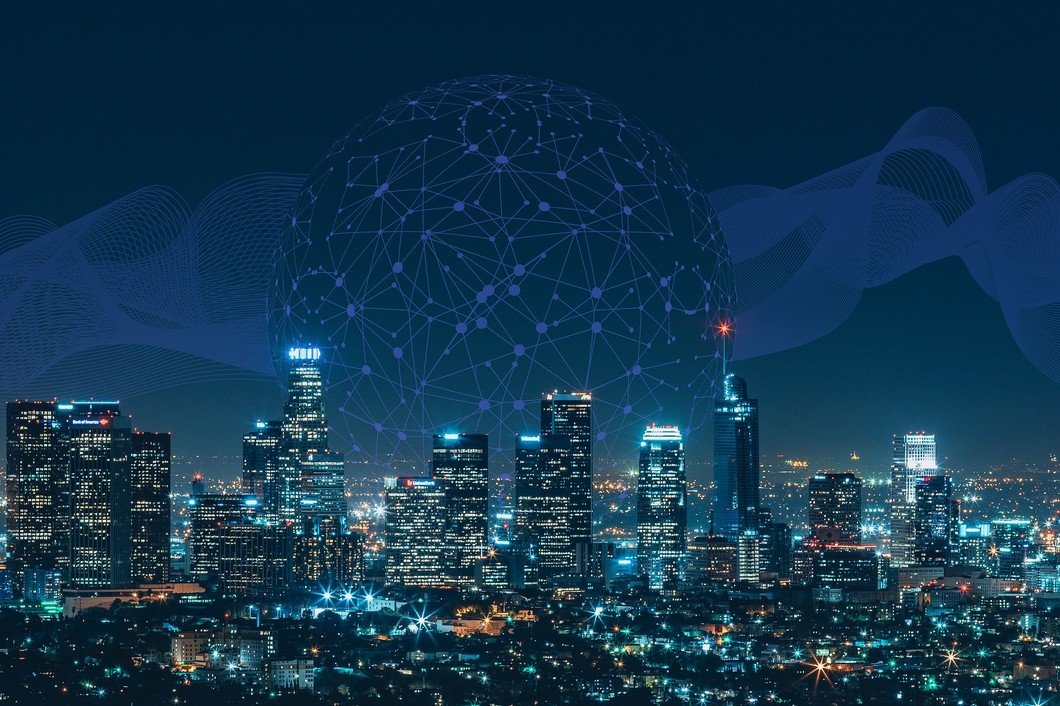This article provides an easy-to-understand guide about Deep Learning vs. Machine Learning and AI technologies. With the enormous advances in AI, from driverless vehicles, automated customer service interactions, intelligent manufacturing, smart retail stores, and smart cities to intelligent medicine, this advanced perception technology is widely expected to revolutionize businesses across industries.
The terms AI, machine learning, and deep learning are often (incorrectly) used mutually and interchangeably. Here’s a handbook to help you understand the differences between these terms and machine intelligence.
- Artificial Intelligence (AI) and why it is important.
- How is AI related to Machine Learning (ML) and Deep Learning (DL)?
- What are Machine Learning and Deep Learning?
- Key characteristics and differences of ML vs. DL

What Is Artificial Intelligence (AI)?
For over 200 years, the principal drivers of economic growth have been technological innovations. The most important of these are so-called general-purpose technologies such as the steam engine, electricity, and the internal combustion engine. Each of those innovations catalyzed waves of innovations and opportunities across industries. The most important general-purpose technology of our era is artificial intelligence.
Artificial intelligence, or AI, is one of the oldest fields of computer science and is very broad, involving different aspects of mimicking cognitive functions for real-world problem-solving and building computer systems that learn and think like people. Accordingly, AI is often called machine intelligence in contrast to human intelligence.
The field of AI revolves around the intersection of computer science and cognitive science. AI can refer to anything from a computer program playing a game of chess to self-driving cars and computer vision systems.
Due to the successes in Machine Learning (ML), AI now raises enormous interest. AI, and particularly ML, is the machine’s ability to keep improving its performance without humans having to explain exactly how to accomplish all of the tasks it’s given. Within the past few years, machine learning has become far more effective and widely available. We can now build systems that learn how to perform tasks on their own.
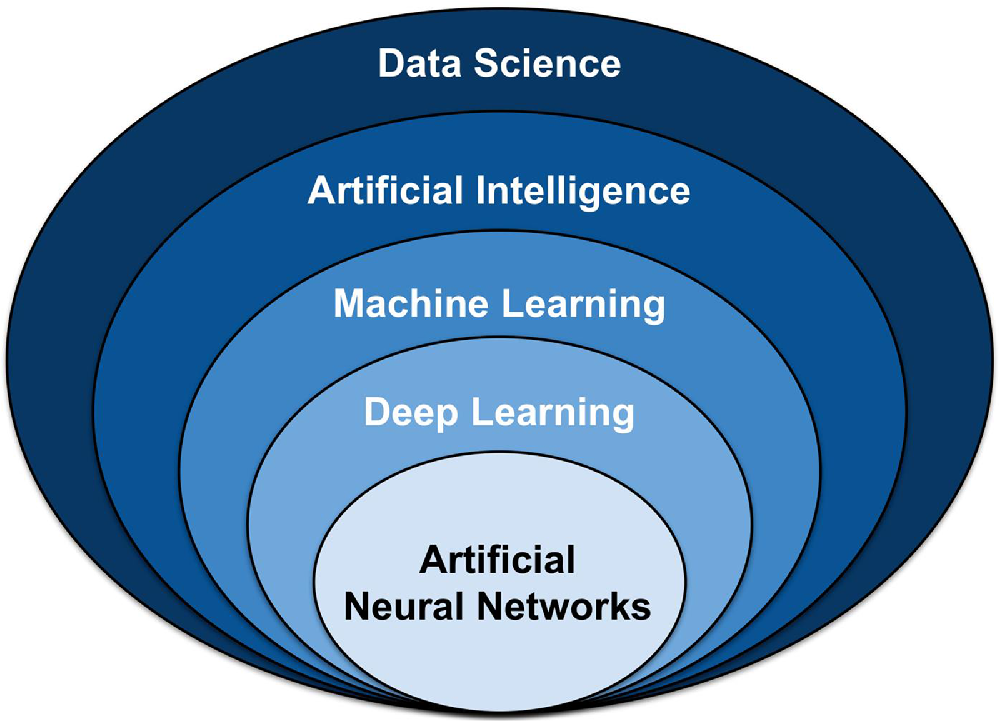
What Is Machine Learning (ML)?
Machine learning is a subfield of AI. The core principle of machine learning is that a machine uses data to “learn” based on it. Hence, machine learning systems can quickly apply knowledge and training data from large data sets to excel at people recognition, speech recognition, object detection, translation, and many other tasks.
Unlike developing and coding a software program with specific instructions to complete a task, ML allows a system to learn to recognize patterns on its own and make predictions.
Machine Learning is a very practical field of artificial intelligence to develop software that can automatically learn from previous data to gain knowledge from experience and gradually improve its learning behavior to make predictions based on new data.
Machine Learning vs. AI
Even while Machine Learning is a subfield of AI, the terms AI and ML are often used interchangeably. Machine Learning can be seen as the “workhorse of AI,” and the adoption of data-intensive machine learning methods.
Machine learning takes in a set of data inputs and then learns from that input data. Hence, machine learning methods use data for context understanding, sense-making, and decision-making under uncertainty.
As part of AI systems, machine learning algorithms are commonly used to identify trends and recognize patterns in data.
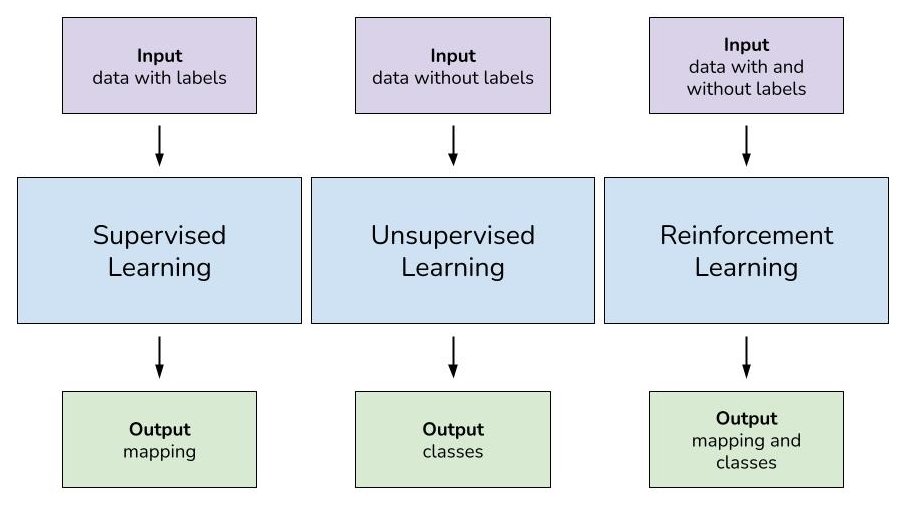
Why Is Machine Learning Popular?
Machine learning applications can be found everywhere, throughout science, engineering, and business, leading to more evidence-based decision-making.
Various automated AI recommendation systems are created using machine learning. An example of machine learning is the personalized movie recommendations of Netflix or the music recommendations of on-demand music streaming services.
The enormous progress in machine learning has been driven by the development of novel statistical learning algorithms along with the availability of big data (large data sets) and low-cost computation.
What Is Deep Learning (DL)?
A highly popular method of machine learning is called Deep Learning (DL). Deep Learning is a family of machine learning models based on deep neural networks with a long history.
Deep Learning is a subset of Machine Learning. It uses some ML techniques to solve real-world problems by tapping into neural networks that simulate human decision-making. Hence, Deep Learning trains the machine to do what the human brain does naturally.
Deep learning is best characterized by its layered structure, which is the foundation of artificial neural networks. Each layer adds to the knowledge of the previous layer.
DL tasks can be expensive, depending on significant computing resources, and require massive structured or unstructured data sets to train ML models on. For Deep Learning, a huge number of parameters need to be understood by a learning algorithm, which can initially produce many false positives.
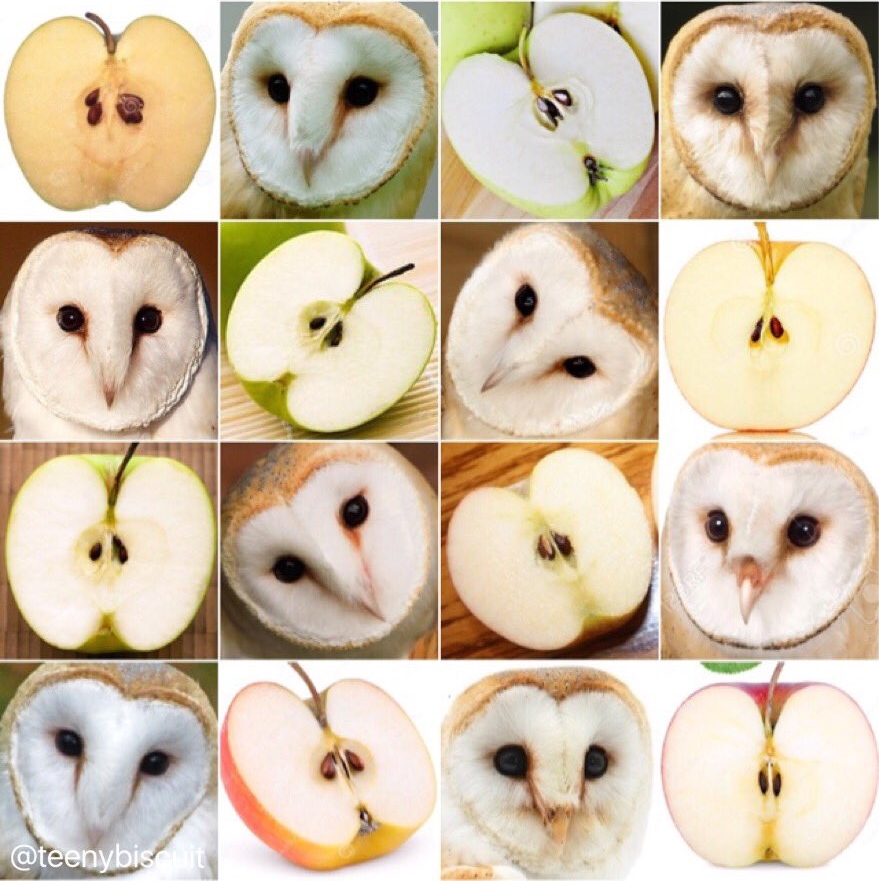
What Are Deep Learning Examples?
For instance, a deep learning algorithm can be instructed to “learn” what a dog looks like. It would take a massive data set of images to understand the very minor details that distinguish a dog from other animals, such as a fox or panther.
Overall, deep learning powers the most human-resemblant AI, especially when it comes to computer vision. Another commercial example of deep learning is the visual face recognition used to secure and unlock mobile phones.
Deep Learning also has business applications that take a huge amount of data, millions of images, for example, and recognize certain characteristics. Text-based searches, fraud detection, frame detection, handwriting and pattern recognition, image search, and AI face recognition are all tasks that can be performed using deep learning. Big AI companies like Meta/Facebook, IBM, or Google use deep learning networks to replace manual systems. And the list of AI vision adopters is growing rapidly, with more and more use cases being implemented.
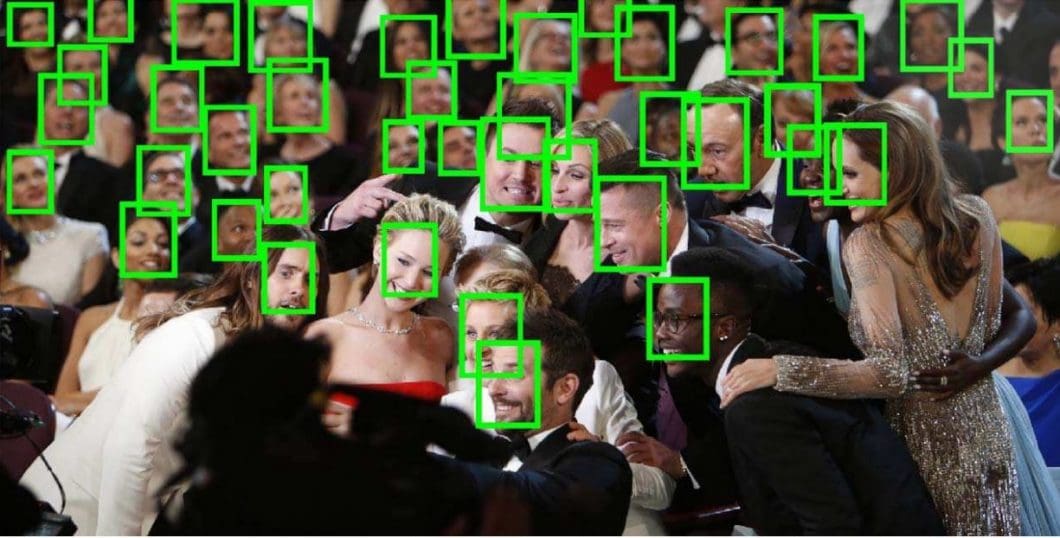
Why Is Deep Learning Popular?
Deep Learning is very popular today because it enables machines to achieve results at human-level performance. For example, in deep face recognition, AI models achieve a detection accuracy (e.g., Google FaceNet achieved 99.63%) that is higher than the accuracy humans can achieve (97.53%).
Today, deep learning is already matching medical doctors’ performance in specific tasks (read our overview about Applications In Healthcare). For example, it has been demonstrated that deep learning models were able to classify skin cancer with a level of competence comparable to human dermatologists. Another deep learning example in the medical field is the identification of diabetic retinopathy and related eye diseases.
Deep Learning vs. Machine Learning
Difference Between Machine Learning and Deep Learning
Machine learning and deep learning both fall under the category of artificial intelligence, while deep learning is a subset of machine learning. Therefore, deep learning is a part of machine learning, but it’s different from traditional machine learning methods.
Deep Learning has specific advantages over other forms of Machine Learning, making DL the most popular algorithmic technology of the current era.
Machine Learning uses algorithms whose performance improves with an increasing amount of data. On the other hand, Deep learning depends on layers, while machine learning depends on data inputs to learn from itself.
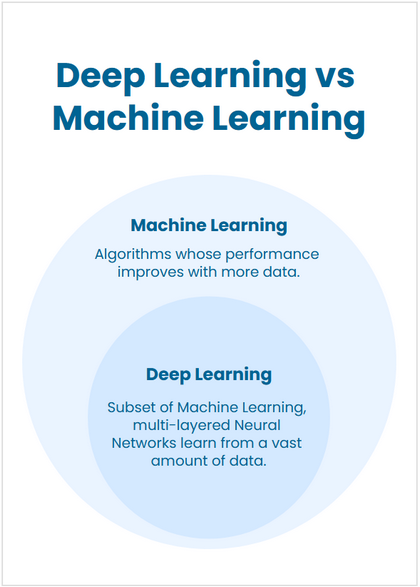
Overview of Machine Learning vs. Deep Learning Concepts
Though both ML and DL teach machines to learn from data, the learning or training processes of the two technologies are different.
While both Machine Learning and Deep Learning train the computer to learn from available data, the different training processes in each produce very different results.
Also, Deep Learning supports scalability, supervised and unsupervised learning, and layering of knowledge, making this science one of the most powerful “modeling science” for training machines.
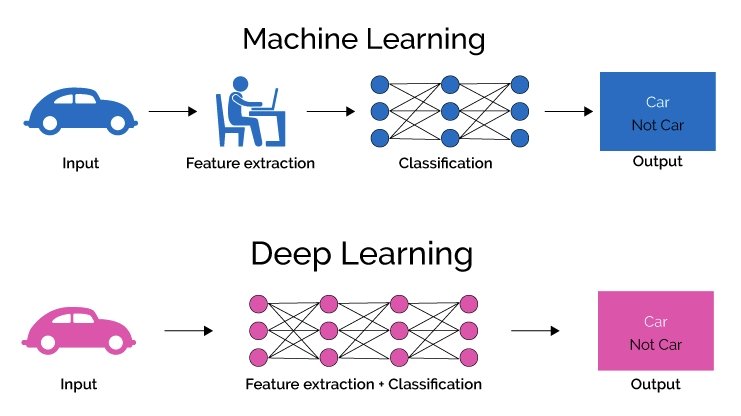
Key Differences Between Machine Learning and Deep Learning
The use of neural networks and the availability of superfast computers have accelerated the growth of Deep Learning. In contrast, the other traditional forms of ML have reached a “plateau in performance.”
| Machine Learning | Deep Learning | |
| Training | Allows a comparably faster training based on data; more data equals better results. | Requires intensive computation to train neural networks with multiple unhidden and hidden layers. |
| Performance | Some forms have reached a “plateau in performance”. | The use of neural networks and the availability of superfast computers have accelerated the growth. |
| Manual Intervention | Whenever new learning is involved, human developers must intervene and adapt the algorithm for learning to happen. | Neural networks facilitate layered training, where smart algorithms can train the machine to use the knowledge gained from one layer to the next layer for further learning without the presence of human intervention. |
| Learning | The human developer guides the machine on what type of feature to look for. Requires the problem statement to break a problem down into different parts to be solved subsequently and then combine the results at the final stage. | The feature extraction process is fully automated. As a result, the feature extraction in deep learning is more accurate and result-driven. Solve the problem end-to-end, making the learning process faster and more robust. |
| Data | Depends on a guided study of data samples, which are still large but comparatively smaller. | As neural networks rely on layered knowledge without human intervention, a large amount of data is required to learn from. |
| Accuracy | Developer errors can lead to bad decisions and low accuracy, leading to lower flexibility. | Self-training capabilities enable faster and more accurate results. |
| Computing | Trains on CPU | Trains even better on GPU |
Limitations of Machine Learning
Machine learning is not usually the ideal solution to solve very complex problems, such as computer vision tasks that emulate human “eyesight” and interpret images based on features. Deep learning allows computer vision to be a reality because of its incredibly accurate neural network architecture, which isn’t seen in traditional machine learning.
While machine learning requires hundreds, if not thousands, of augmented or original data inputs to produce valid accuracy rates, deep learning requires fewer annotated images to learn from. Without deep learning, computer vision would not be nearly as accurate as it is today.
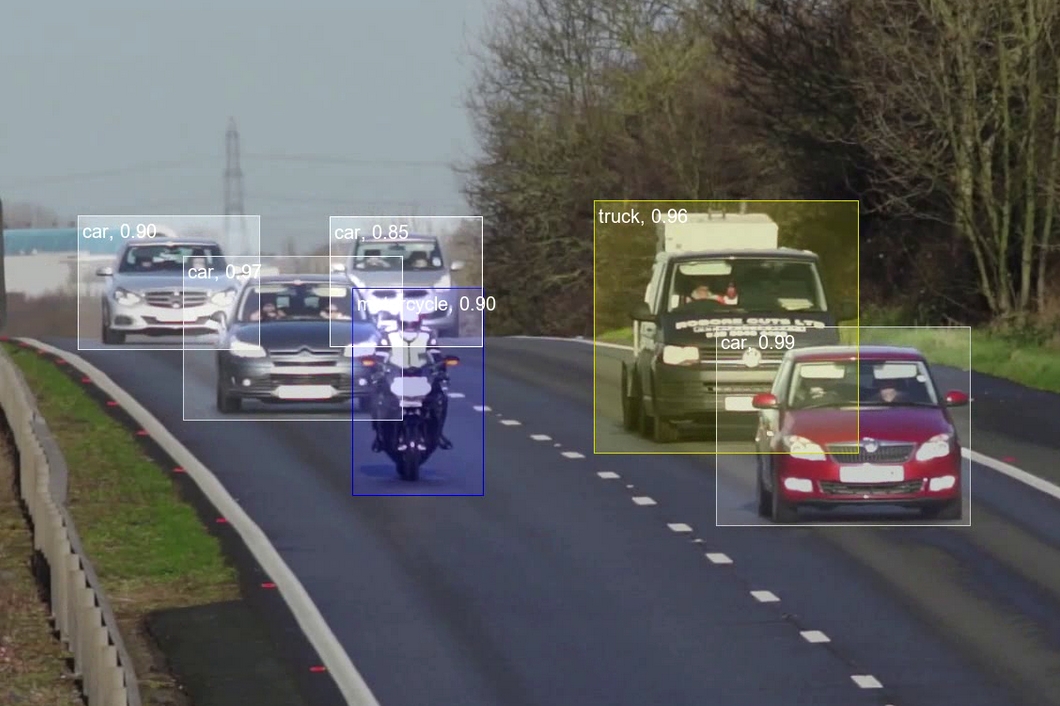
Computer Vision vs. Machine Learning vs. Deep Learning
Here at viso.ai, we deal in the computer vision sector. Our Viso Suite infrastructure is built on the premise of working with enterprise companies to implement automated AI vision solutions in their workflows. Computer vision is a subset of both machine learning and deep learning, taking key aspects from both fields.
Computer Vision and Machine Learning
Traditional computer vision has often relied on manually engineered features and models to interpret images. Machine learning improved upon this by allowing models to learn from data. For instance, support vector machines and random forests can be used to classify images based on pre-extracted features.
Computer Vision and Deep Learning
Deep learning has significantly advanced computer vision with the introduction of Convolutional Neural Networks (CNNs), a deep learning model that has become the standard for many computer vision tasks. CNNs can automatically learn hierarchical features directly from images, which has led to state-of-the-art performance in image classification, object detection, and image segmentation.
Learn More About the Intricacies of Machine Learning vs. Deep Learning
When implementing automated solutions for business processes, it is important to understand the nuances behind the technology. With this understanding, it will help with budgeting, project management, and resource optimization.
If you want to read more about machine learning, we recommend the following articles:
- Explore how AI can generate images with text-to-image
- Read about the differences between ANN and CNN
- Overview of Five Deep Learning Frameworks.
- An Introduction to Semi-Supervised Machine Learning
- A Guide to Self-Supervised Machine Learning
- What are Decision Trees?
- Recurrent Neural Networks, Convolutional Neural Networks, Multi-Layer Perceptrons
